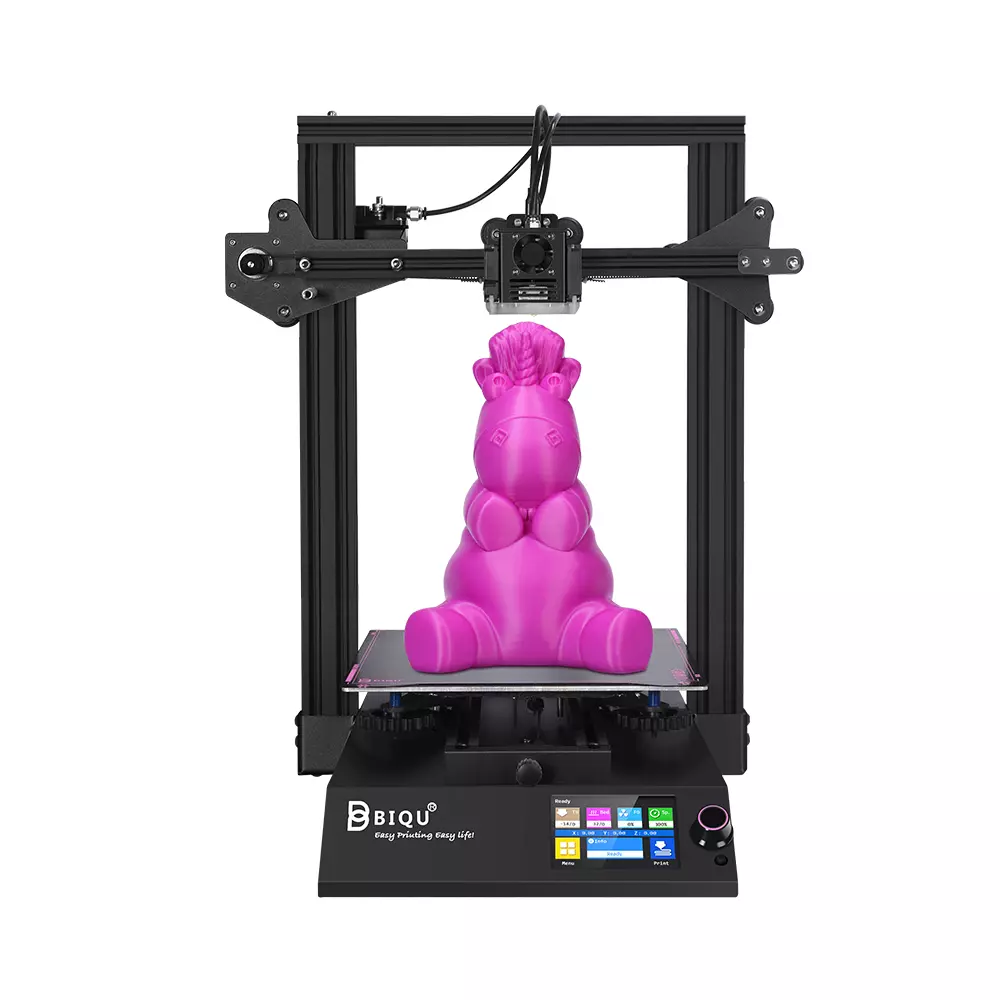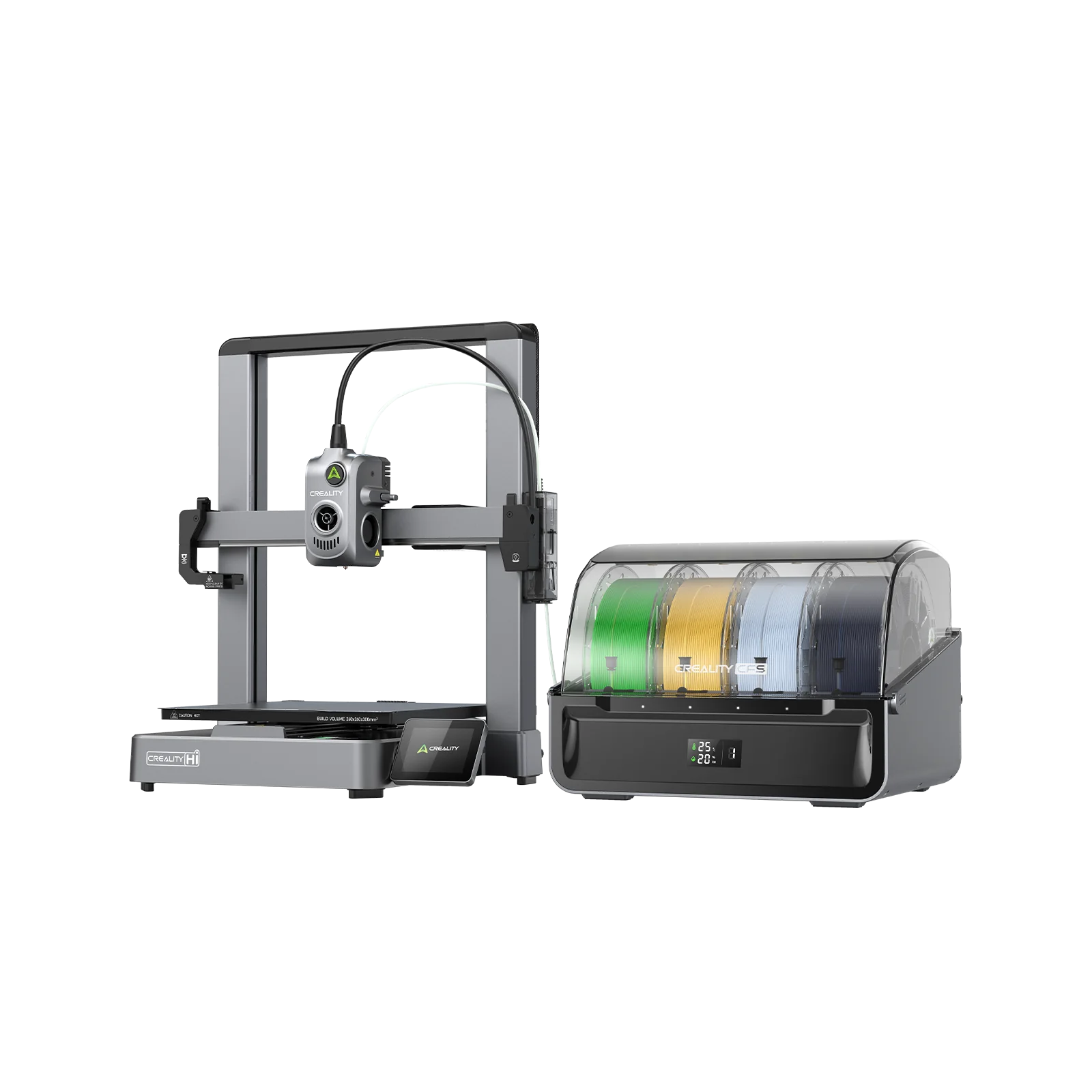Compare BIQU B1 vs Hi Combo
Comparison between the best 3D printers
Choose the best 3D printer at the best price. The cheapest 3D printers are here.
Buy a 3D printer here with 3D Fila.
 |
 |
|
| Model | BIQU B1 |
Hi Combo |
| Printing Material | Filament | Filament |
| Buy Filament for BigTreeTech BIQU B1 | Buy Filament forCreality Hi Combo | |
| Estimated price | $269,00 | $469,00 |
| Manufacturer | BigTreeTech | Creality |
| Release Year | 2020 | 2025 |
| Print Volume [mm] | 235x235x270 | 260x260x300 |
| Printer Size [mm] | 412x402x492 | 409x392x477 |
| Weight [kg] | 8,00 | 19,14 |
| Power Loss Recovery | YES | YES |
| Enclosed printer | NO | NO |
| Bed Leveling | Manual | Automatic |
| Filament End Sensor | YES | YES |
| Bed type | Heated | Heated |
| Power supply system | Bowden | Direct Drive |
| Standard nozzle | 0,4 | 0,4 |
| Maximum Nozzle Temperature [°C] | 250 | 300 |
| Maximum Bed Temperature [°C] | 100 | 100 |
| Maximum printing speed [mm/s] | 100 | 500 |
| Filament holder | YES | YES |
| Camera for supervision | NO | NO |
| Recommended filaments | PLA, TPU, ABS, PETG | Hyper-PLA/PLA/PETG/ABS/PLA-CF |
| Recommended slicers | Cura, Simplify, Slic3r | Creality Print 5.1 |
| Maximum Resolution [mm] | 0,1 | 0,1 |
| Processor | 32 Bits BTT SKR V 1.4 | |
| Display | Touchscreen TFT 3,5'' | Touchscreen 3,2'' |
| Power Supply | 24V / 360W | 390 W |
| Connectivity | SD / USB | SD Wifi Creality Cloud |
| Operating systems | Windows, Mac, Linux | Windows, Linux e Macbook |
| Date of registration in the system | 2021-04-14 | 2025-01-27 |
| Release date | 2020 | 2025 |
| Extra features | The BIQU B1 is an advanced 3D printer with a silent 32-bit BTT SKR V1.4 motherboard and ARM Cortex-M3 CPU, offering DIY interfaces (I2C, SPI, WiFi) and dual Z-axis. Its dual BTT B1 TFT35 V3.0 operating system allows real-time monitoring and multiple printing modes, including G-code visualization effects. It stands out for its BIQU SSS (Super Spring Steel), ensuring easy model adhesion and simplified removal, with the possibility of using it on both sides. It includes a filament sensor, automatically pausing printing in case of filament breakage. The multicolored RGB lights integrated into the hotend allow you to view the printing status even at night. Additional notes include the need for a BIQU-specific Type-C cable and extra interfaces for smart filament sensor and BL Touch. | The Creality Hi Combo is an advanced 3D printer featuring the CFS system for up to 16 colors and intelligent filament management. It boasts a robust metal frame, speeds up to 500 mm/s, precise auto-leveling, an integrated extruder design, easy-to-swap tri-metal nozzle, and active vibration sensing for smooth prints. Its 95% pre-assembled, with a foldable touchscreen, built-in camera with privacy protection, and Creality OS support for a seamless and powerful experience. |
| Support for multiple colors and materials (AMS and CFS) | NO | YES |
Notes * |
||
| Cost-benefit | 7 / 10 | 8 / 10 |
| Hardware | 2 / 10 | 6 / 10 |
| Tela | . | . |
| Print volume | 3 / 10 | 4 / 10 |
| Performance | 1 / 10 | 4 / 10 |
Conclusion |
| In comparing the BIQU B1 and the Creality Hi Combo, it is clear that both printers cater to distinct user needs and preferences, each with its own strengths. The BIQU B1 stands out for its affordability and user-friendly features, making it an attractive option for beginners or hobbyists. It offers a decent print volume, manual bed leveling, and the ability to handle a variety of filament types. Its advanced motherboard and features like dual Z-axis and filament sensor showcase its capabilities, although it lacks some of the modern conveniences seen in newer models. On the other hand, the Creality Hi Combo, while pricier, provides a more advanced printing experience with features such as automatic bed leveling, a higher maximum printing speed, and support for a broader range of materials and colors. Its robust construction and enhanced performance make it suitable for users seeking higher-quality prints and greater speed. Additionally, the built-in camera and Wi-Fi capabilities further enhance its usability and monitoring options. In terms of cost-benefit analysis, the BIQU B1 scores lower due to its limitations in hardware and print performance, while the Hi Combo offers a significantly better return on investment for those who can afford the higher price. Ultimately, the choice between the two depends on your specific needs, budget, and level of expertise. For casual users or those new to 3D printing, the BIQU B1 offers a solid entry point. However, for enthusiasts or professional users seeking efficiency, speed, and advanced features, the Creality Hi Combo justifies its higher cost with enhanced capabilities. |

